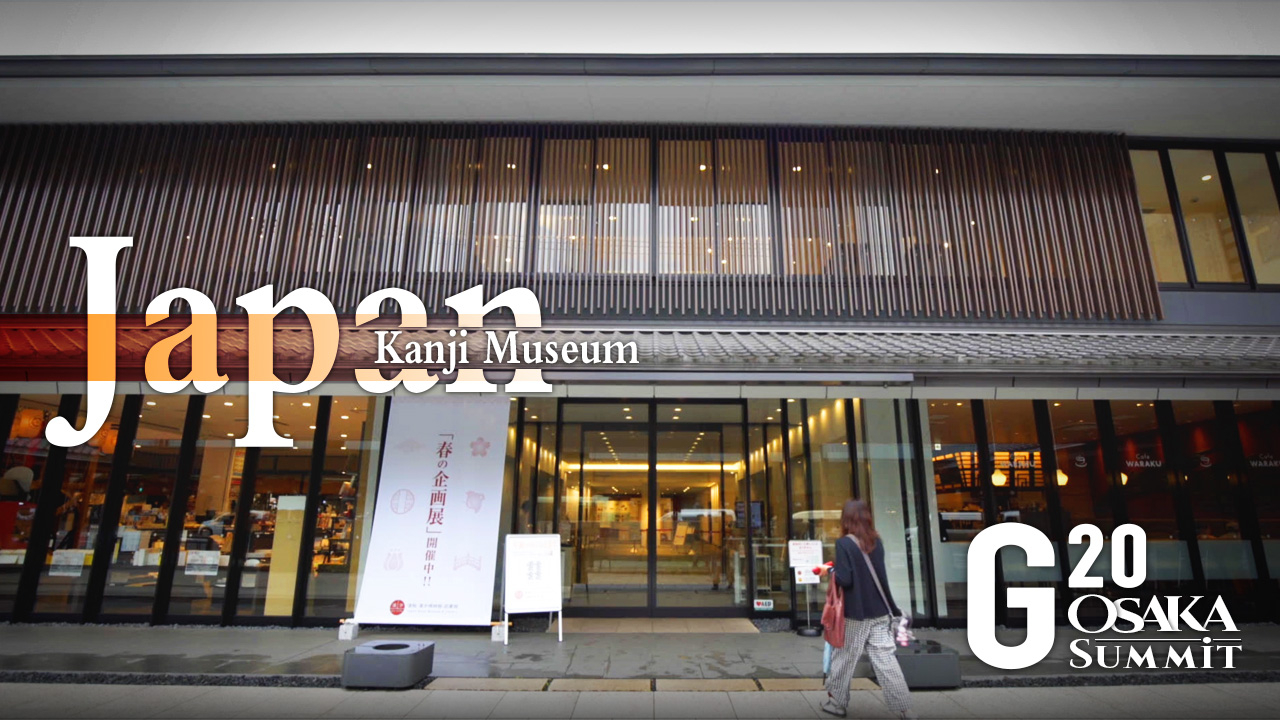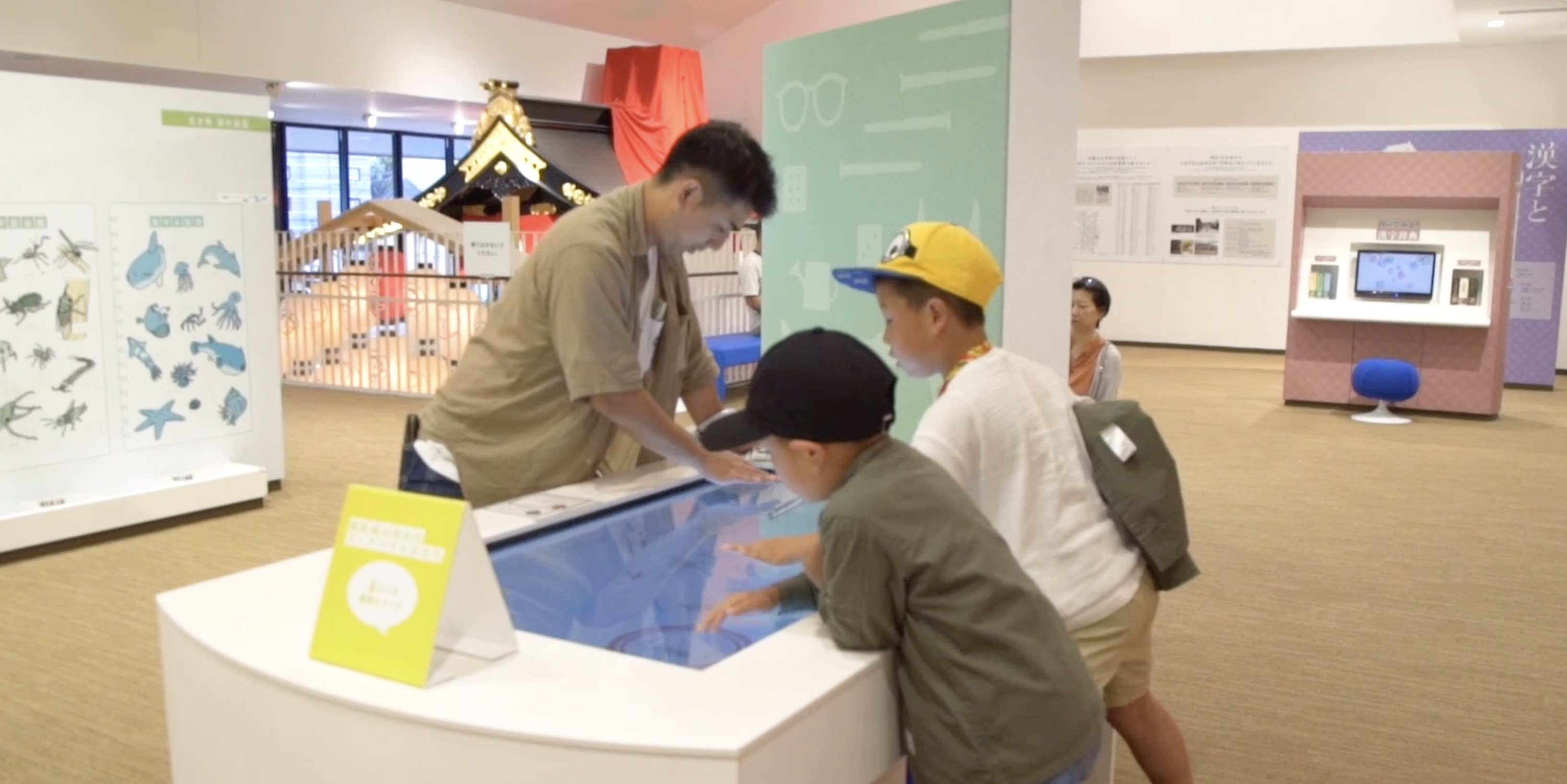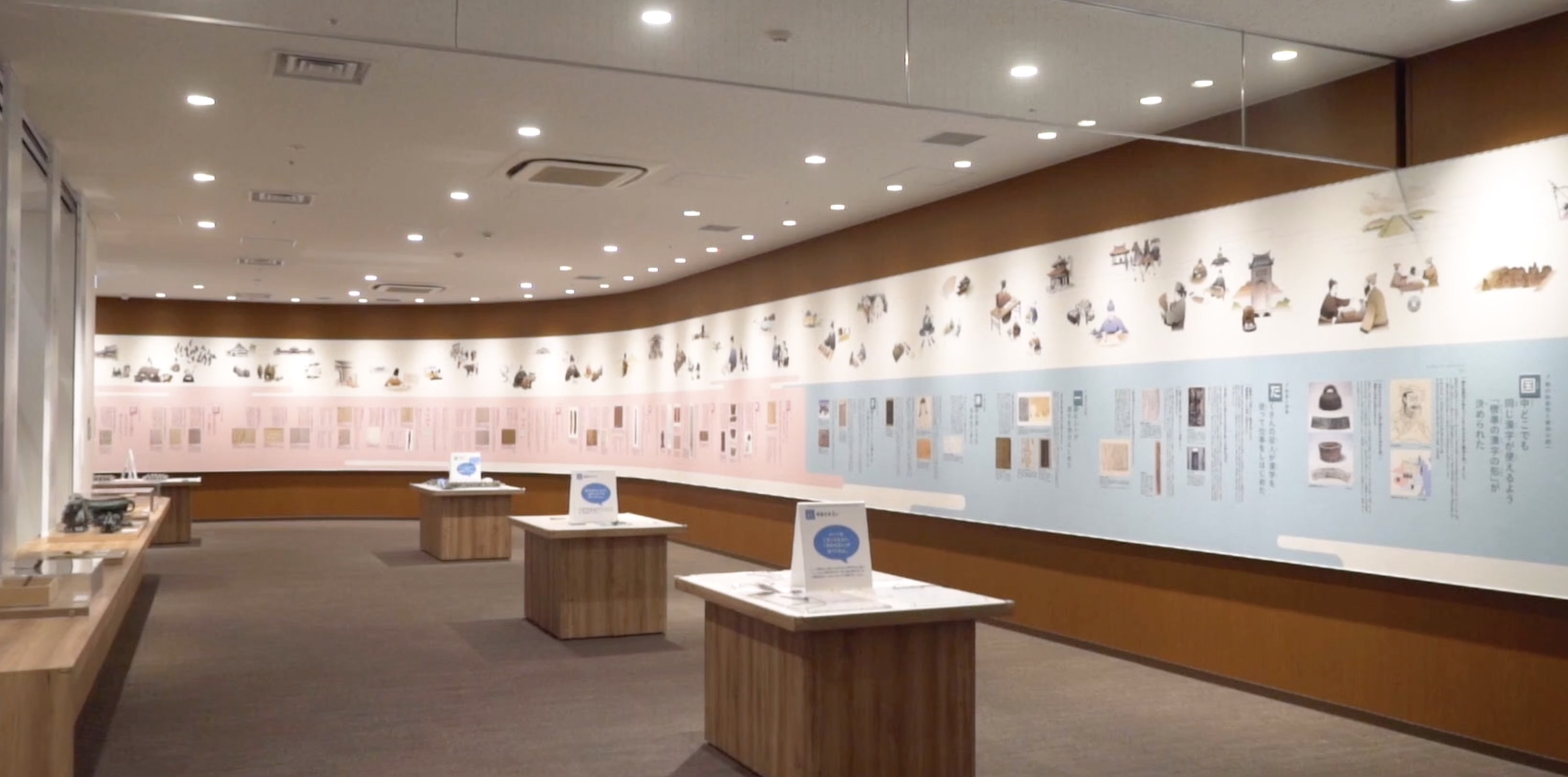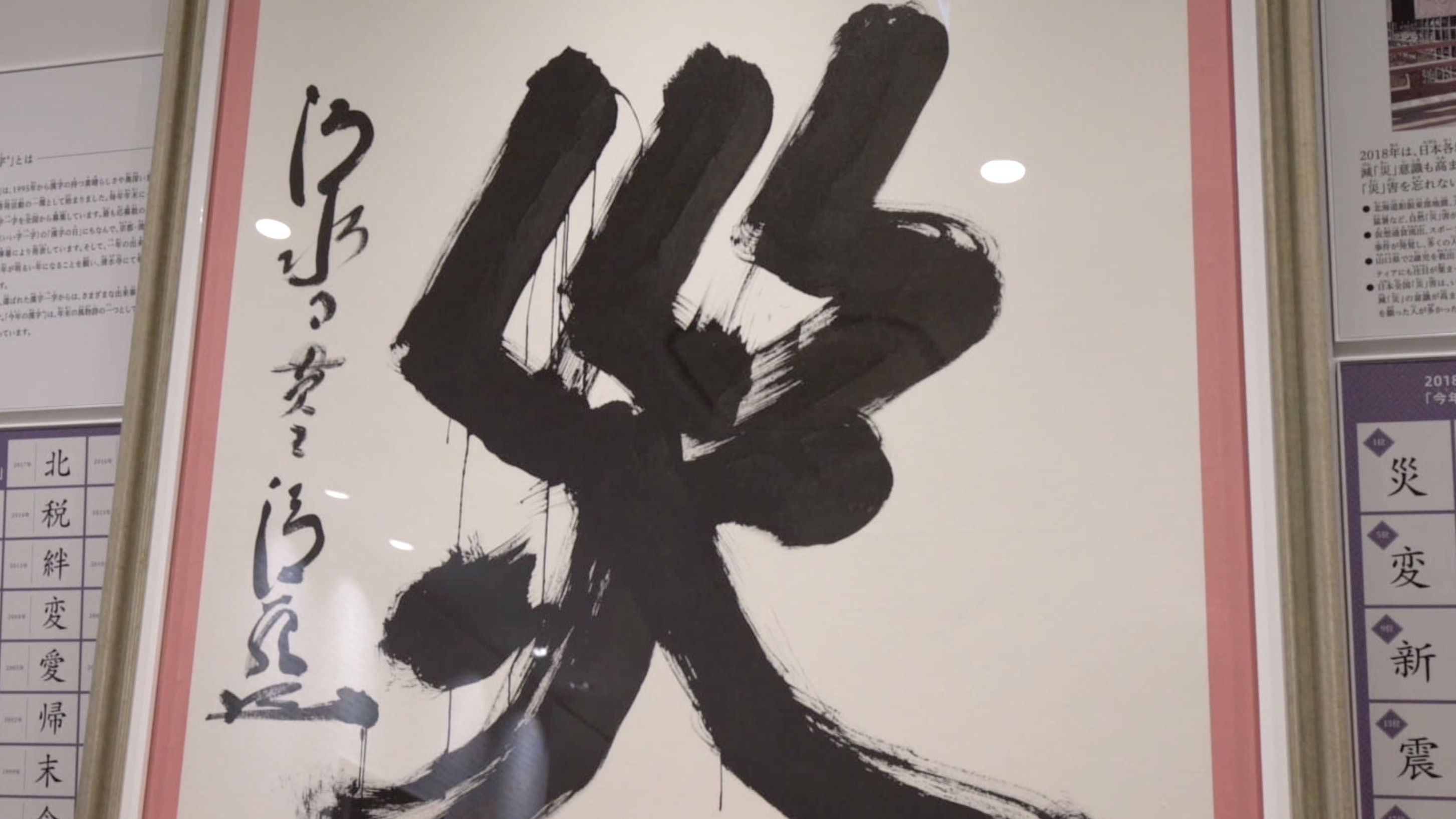

Chinese influence can be found in many Asian countries and regions, the languages of which are written in the form of Chinese characters.
Among all the tongues, Japanese observes a special connection with Chinese as it uses a sizable number of Chinese characters, or "kanji" in Japanese.
Located at the edge of Kyoto's popular Gion district, the Japan Kanji Museum and Library, as its name implies, is an instinctive museum that showcases the charm of kanji – the adopted logographic Chinese characters.

The 50,000 kanji tower is the centerpiece of the Kanji Museum in Kyoto, Japan. /CGTN Photo
Walking into the museum, the exterior of which is designed in the traditional Japanese architectural style, visitors are offered the chance to learn more about Chinese characters by seeing and touching them.
Inside the two-floor building are numerous exhibits and facilities, through which you are able to delve into the history of the development of the characters into modern kanji, as well as to discover new things about them.
At the center of the first floor is the centerpiece of the museum – 50,000 kanji tower, which is a 7.8-meter pillar presenting characters printed in different colors and different sizes.

Visitors can learn about the Chinese characters through playing games at the Kanji Museum in Kyoto, Japan. /CGTN Photo
Besides the huge exhibit is a display for the Kanji of the Year, which is announced each year. There is a wall introducing the history of kanji, which starts from their origin in China and switches to their development in Japan.
More interactive experiences are observed on the second floor, where you can play games and quizzes to learn about and get a feel for the Chinese characters.
With diverse activities and workshops for families, the museum attracts visitors of all ages to explore the magic of Chinese characters.
A cultural bond promotes trilateral communication

An exhibition introducing the history of kanji, which starts from their origin in China, can be seen at the Kanji Museum in Kyoto, Japan. /CGTN Photo
As the first museum dedicated to Chinese characters in Japan, the Kanji Museum also serves as a cultural bridge between different countries.
It is noteworthy that a tree is erected at the upper floor to show 808 Chinese characters collectively used in China, Japan and Korea.
In 2014, scholars from all three countries came together and released a chart of the 808 characters at the Ninth Northeast Asia Trilateral Forum.
Former president of Renmin University of China Ji Baocheng, who spearheaded the project along with two research parties from Korea and Japan, noted that "As long as they know those 808 Chinese characters, people from the three countries can communicate without barriers."

The Kanji of the Year for 2018 is on display at the Kanji Museum in Kyoto, Japan. /CGTN Photo
Opened in June 2016, the Kanji Museum is run by the Japan Kanji Aptitude Testing Foundation, which also hosts the Kanji Aptitude Test, also known as the Kanji Kentei, and the annual Kanji of the Year poll.
While enjoying diverse exhibits, visitors can also try a smartphone with the Kanji Kentei app on it, through which you can test how many characters you recognize.
According to the organization, there are more than two million participants per year who register for the official kanji-testing exams.
Given its widespread influence, Japan marks Day of Kanji on December 12. On the same day, the Kanji of the Year, which was selected by popular vote to encapsulate the year, will be announced.
Producer: Dang Zheng
Director: Hong Yaobin
Videographer: Naotomo Umewaka
Video editors: Naotomo Umewaka, Sun Da, Hong Yaobin
Cover image designer: Yin Yating

Copyright © 2018 CGTN. Beijing ICP prepared NO.16065310-3
Copyright © 2018 CGTN. Beijing ICP prepared NO.16065310-3